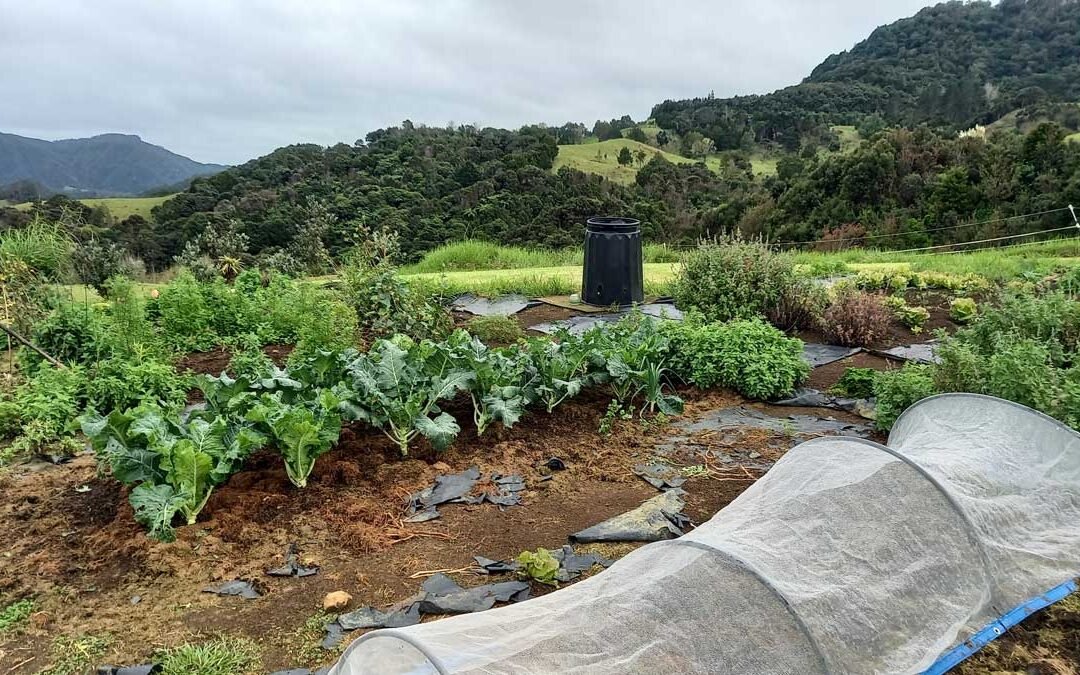With a nice gap in the weather, I’ve been spending some time in the garden this week, and I figured it was worth a little update.
I’m still working on the summer clean-up, but in general I feel pretty on top of things. The summer crops have been bought inside, and the winter crops are all under control.
Autumn and winter are probably my favourite seasons in the garden. There’s plenty of rain and everything starts to look really nice. Pest burden is usually down and there’s time to weed beds and get them ready for next spring.
It’s less relentless than summer. I miss the long evenings, but I’m happy to take whatever chance I get to go tidy up and plant things.
Strawberry bed
My strawberry bed… really got away from me last summer.
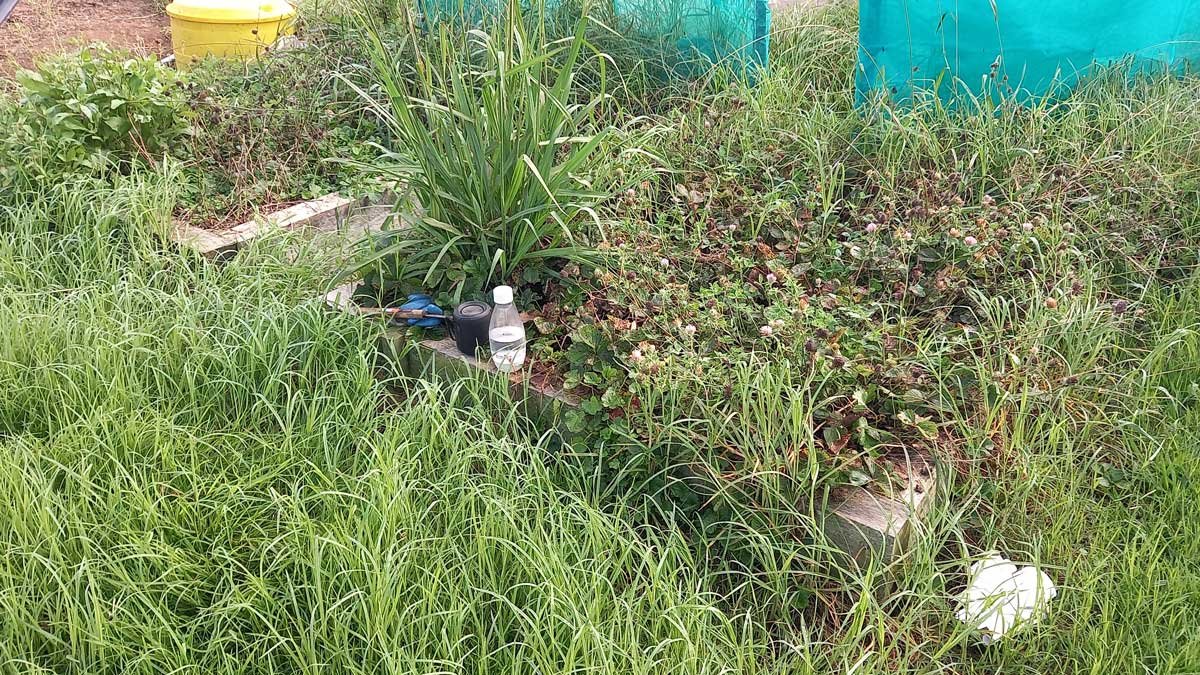
It’s full of weeds, kikuyu, and apparently – rodents.
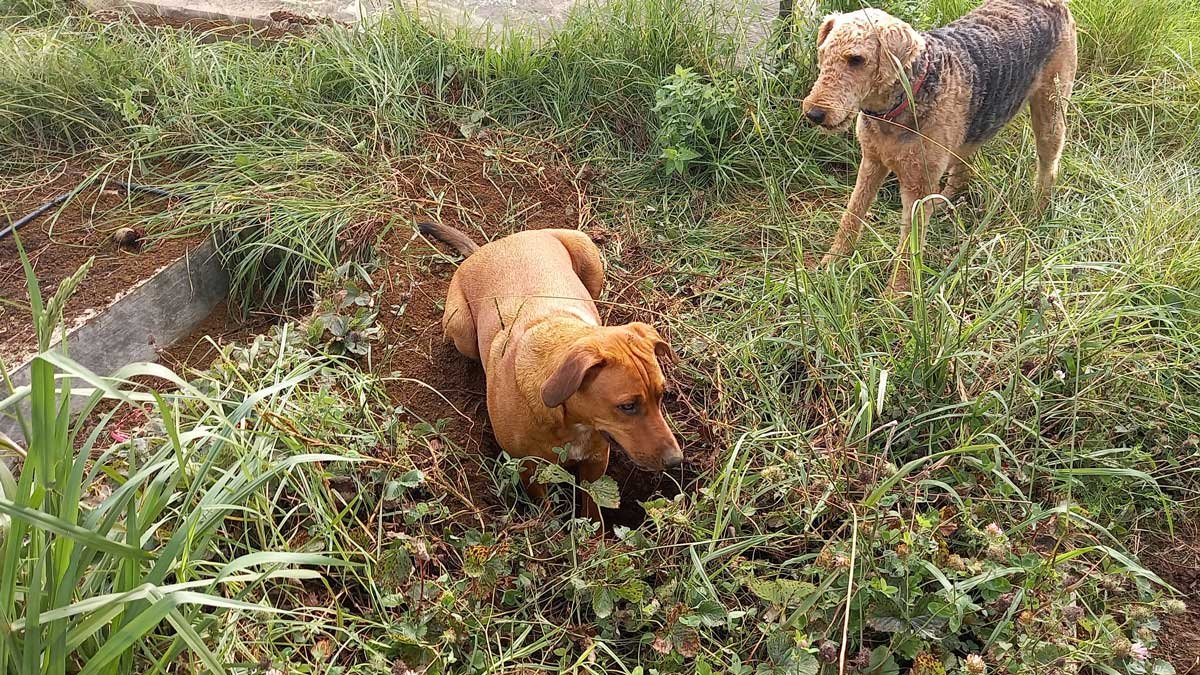
I’m thinking about ripping all the strawberries out this winter. I need to eradicate the kikuyu from this bed, and that’s going to take some time and attention.
I’m also thinking about changing strawberry varieties – abandoning this ‘short day’ variety for a ‘daylight neutral’ one that might provide berries more consistently throughout the year.

So this bed is still in progress, and is likely to be ripped out and changed-around entirely. But I did remove the weeds. And I think Roxy evicted the rodents. So that’s something.
Brassica
We have two beds filled with brassica at the moment: one bed is filled with the cauliflower and broccoli I planted a couple of months ago.

Next door, we harvested a late crop of spuds recently, so it was available for a second planting. This time, broccoli and red cabbage.
The first planting of broccoli is just beginning to form heads. Last week I removed the insect net as they were getting too big for it.
I spent time tiding up the lower leaves, squashing the corn earworms that had somehow evaded the insect net, mounding the stems with soil, and distributing snail bait.

Before (above) and after (below): tidying up the lower leaves to improve airflow, remove pests, and provide chicken food!
Mounding soil around the stems after a tidy-up like this will promote extra root growth and help stabilise your plants.
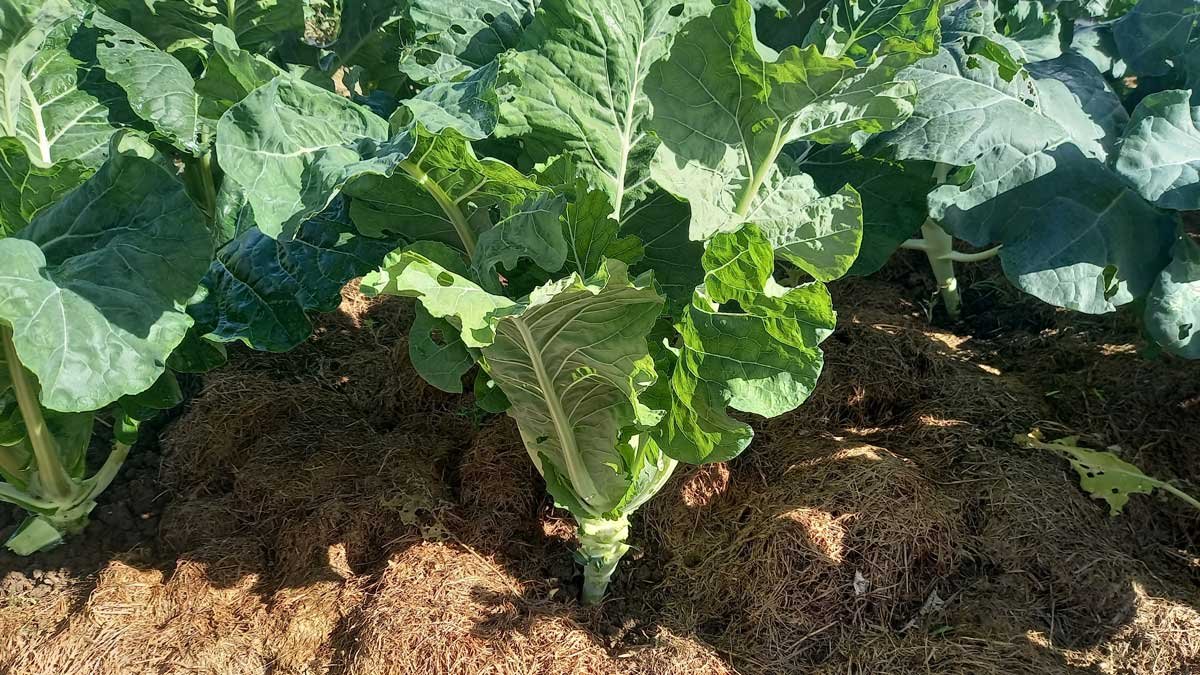
With the insect net and bed next door available; I decided to pick up another couple of seedling punnets and extend our season into spring. In theory at least, these newer seedlings should start producing as the first lot are finishing up.
Personally, I prefer to buy my brassica as seedlings. We don’t need that many of them, so sowing seeds usually means a lot of work for way too many plants. And there’s a small roadside seedling stall on SH10 between Kerikeri and our place which sells punnets of seedlings for $3 each. A 50 cent investment per plant seems reasonable when a head of cauliflower is almost $8!
The plants are usually high quality, it’s very convenient, and it’s about 30% cheaper than the local garden centres. So it works out nicely to pop in there as I’m going past, grab a couple of punnets, and then plant them out once I get home.
Leeks
I have a very strict planting calendar for leeks. An entire packet of seed is sown in November. I give half those seedlings to my neighbour, and we both plant in January.

After planting in January. The seedlings are tiny, but they’re in those holes.
This year, I held onto some of my seedlings. I noticed last year I lost a few after the first planting, and it happened again this year. So in February I went back with my left over seedlings and filled in the gaps.
This works out nicely. I have about 40 leeks in the garden at various stages of development, which is basically perfect as they mature at different times.
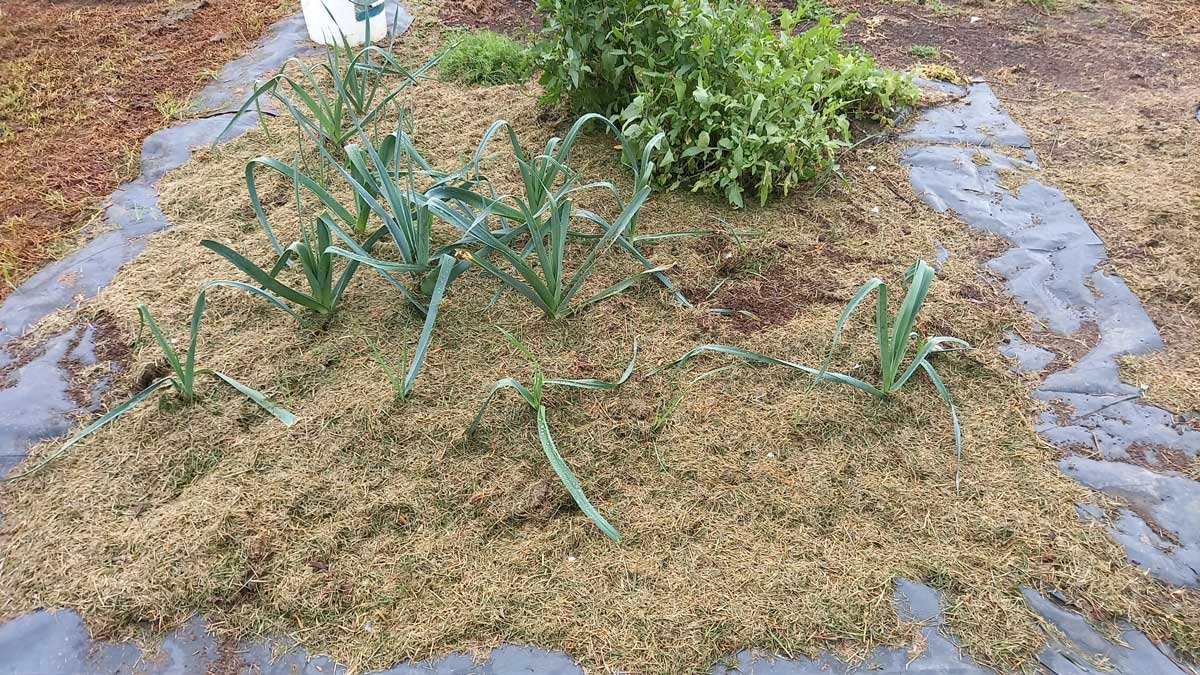
Leeks at various stages of development, kindly mulched by the ride-on lawnmower.
We should be looking to start the harvest in the next couple of weeks. Then, they should last through to about October/November when they’ll start going to seed again.
Preparing for garlic
I have 3-5 beds available for garlic this year. To be honest, I’m a bit scared to develop new beds especially for it, so I’ve found room in the main garden where I know it does best.
If all goes well, we should have a whole pile of garlic in December. While the goal of 2022 was just to retain my varieties, 2023 is about increasing my stock levels. I’ve got roughly a dozen good bulbs of each of my 6 varieties – not enough to sell this year, but enough to keep us on track.
A lot of growers are planting now. Personally, I’ve decided that I will be planting my garlic late. I’ve had the best results in the years I’ve planted on winter solstice (late June), or even as late as early August.
My theory is because spring and summer are (usually) drier, a later planting date means that the maturing plants are exposed to less rain – and therefore, less rust.
So for now, we’re running the baby chickens over the beds we’re planning to plant, and then thickly mulching with grass mulch to keep the weeds down and provide organic matter while we wait.
Lazy gardening project
One thing I really love that works so well in my garden is my lazy gardening ‘project’. So far, cilantro, lettuce, parsley, dill, pak choi, and rocket are happily self-established in my garden. A veritable self-sown salad.
All of them grow and go to seed as they wish. Whenever I want them, I simply go out and find them. There’s always something, somewhere.

My intervention goes as far as spreading dried seed heads around the garden beds. I scatter the seeds widey so that they don’t all concentrate too much in a single place. But that’s about all the work I do for these particular crops, aside from the harvesting and eating part.
It’s possible leeks may self-establish in the coming years. I’m really fond of leek flowers. Their white and purple pom-poms are super attractive, and bees love them. So I don’t tend to rush to pull them out – meaning sometimes the leeks self-seed.
I’ve also noticed the variety I’ve been planting – Musselburgh – seems to produce underground bulbils a lot like elephant garlic. This has resulted in more than one unharvested leek planted last year ‘returning’ this season as a fresh new leek. Given leeks are one of the higher-effort veges in my garden, self-sowing leeks would be pretty amazing.
The Garden Club
On the first of each month, I publish a Garden Guide for my Garden Club members. The May Garden Guide is due out tomorrow.
It covers what to plant, pests to watch out for, handy harvest tips and more.
If you want your garden to keep up with the pace of the seasons, it’s a good way to remind yourself of what needs doing to get the best results from your home produce-section.
Membership starts from just $3 a month. But for $10, you also get monthly ‘deep dives’ into gardening topics.
Last month, I went in-depth on seed saving – including how to get your own plants growing themselves like mine. In the coming months, I’ll be looking at worm farming and how to prune your fruit trees.
I’d love to have you in the club with us!

